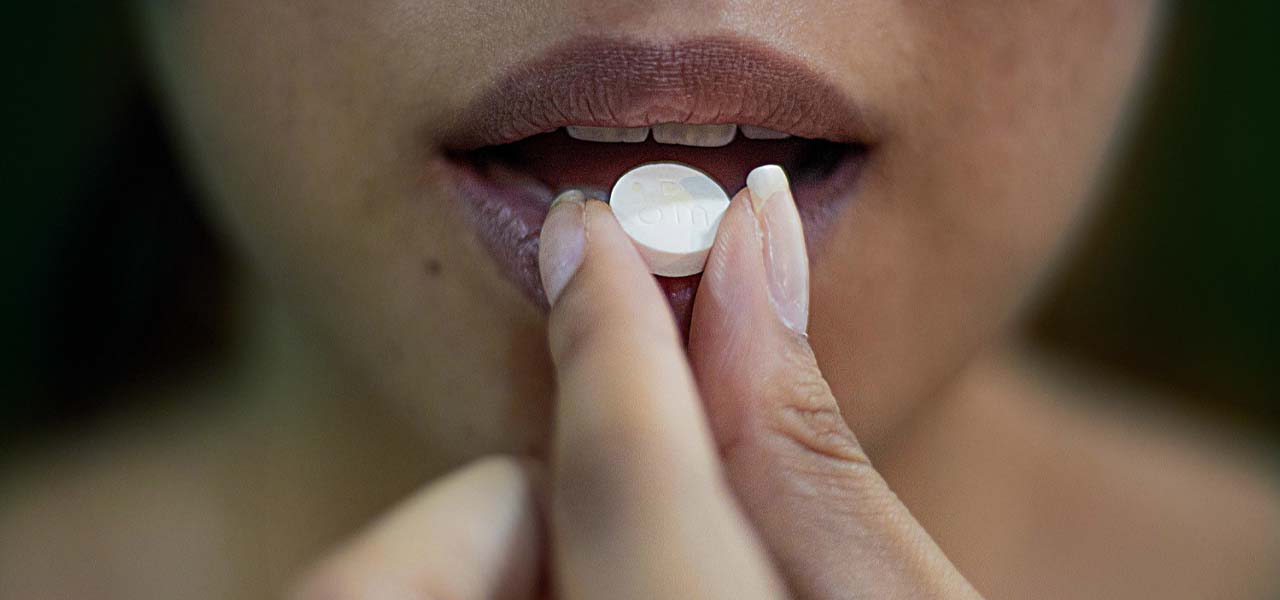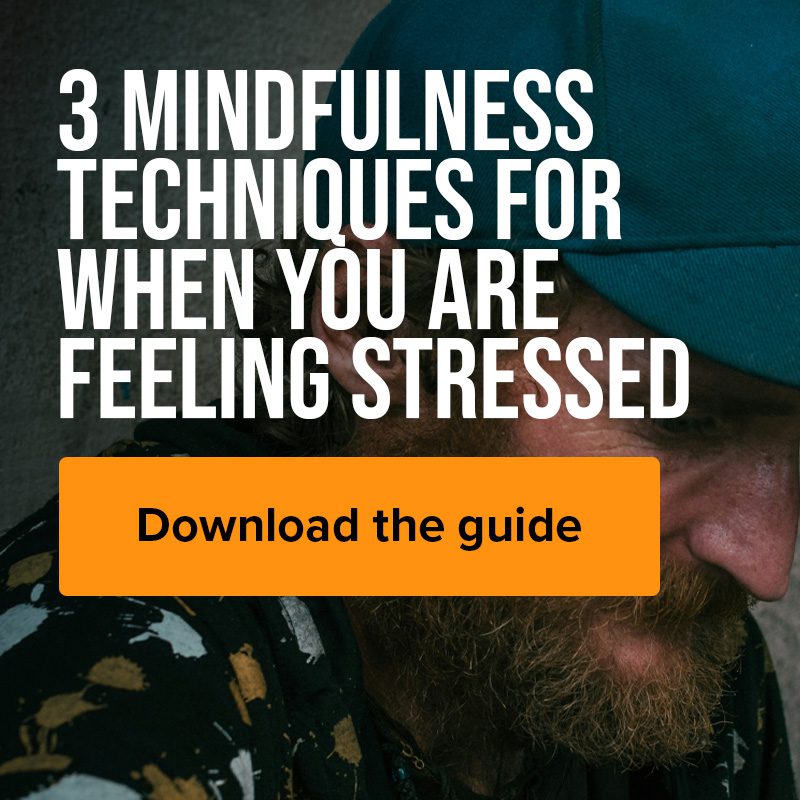Fentanyl: How To Identify This Hidden Killer
A lethal drug has made its way onto Canadian streets in recent years. If the word “fentanyl” doesn’t ring alarm bells, it should. Nearly 9 in 10 deaths due to opioid overdose in early 2021 could be traced back to fentanyl.1 That’s over 1,500 deaths in just three months!1
The threat of fentanyl is growing at a disturbing rate. In just under a decade, fentanyl-related fatal overdoses increased by a staggering 548% in Ontario, making it the deadliest opioid around.2 Similar trends are seen across Canada, with the vast majority of fentanyl deaths occurring in British Columbia, Alberta, and Ontario.1–2
What Is Fentanyl?
Fentanyl is an extremely powerful opioid: a highly-addictive pain-relieving drug derived from poppies.3 Besides fentanyl, other opioids include morphine, codeine, and heroin.1–2 While some opioids are extracted directly from the poppy plant, fentanyl is made by scientists to be chemically identical to naturally sourced opioids.3
How Is Fentanyl Used?
Doctors prescribe fentanyl to ease severe pain. This could be for people who have undergone major surgery or those experiencing chronic pain—particularly if they don’t respond well to other pain-relief medication.3 Approximately 185,000 Canadians have been prescribed fentanyl by their doctors.4
Fentanyl is also one of the most popular drugs for anesthesia. Doctors use it to put you in a sleep-like state or to numb a small part of your body during surgery so that you don’t feel any pain during the procedure. As an anesthetic, fentanyl may be given on its own or in combination with another drug.5–6
What’s of primary concern is when fentanyl is used non-medicinally. People who take fentanyl illicitly in high doses feel a rush of euphoria followed by a calm and relaxing sensation.7–8 But the consequences of illicit fentanyl use can be devastating.
Why Is Fentanyl So Dangerous
Fentanyl carries a particularly high risk of accidental overdose because of how strong, fast-acting, and addictive it is.
Fentanyl is so strong that an amount equal to about four grains of salt can kill you.7,10 In fact, merely touching pure fentanyl can seriously harm or kill you.10 For comparison, fentanyl is 100 times stronger than morphine and 40 times stronger than heroin.7 With such a powerful drug, it’s very easy to overestimate how much fentanyl you can consume safely, especially if you haven’t taken prescribed opioids before.3,7
Not only is the difference between a safe fentanyl dose and a toxic one slim, but its fast action also means you might not realize the danger until it’s too late.8–9 Indeed, life-threatening effects can occur as quickly as two minutes after consuming fentanyl.7
Fentanyl is also highly addictive.8–9,11 Like other opioids, it floods your brain’s reward centre. Before long, fentanyl’s powerful euphoric effect is the only thing that makes you feel good.3,9 It’s also very difficult to stop taking fentanyl once your body has become dependent on it—stopping will lead to a whole host of unpleasant withdrawal symptoms, including muscle and bone pain, insomnia, vomiting, and diarrhea.3 Anyone who wants to stop or detox from a drug like fentanyl should be closely monitored by a healthcare provider to manage these adverse effects.
On top of this, most people aren’t even aware that they’ve taken fentanyl.10 One study found that 3 in 4 people who tested positive for fentanyl denied using it.12 How is this possible? Well, fentanyl is frequently cut into other street drugs, like heroin, cocaine, meth, and MDMA, to make them cheaper to produce.3,7 To demonstrate, when Health Canada tested heroin samples from 2012 to 2015, they discovered that over half were laced with fentanyl.13 Fentanyl can also masquerade as prescription opioids or other counterfeit pills, like Xanax.7,14–16
Regardless of how you encounter fentanyl, the risk of accidental overdose is high because you never quite know where it’s hiding.7
What Does Fentanyl Smell Like, Taste Like, And Look Like?
Given how common fentanyl contamination is, you’re probably interested in knowing how to identify it.
Unfortunately, fentanyl is nearly impossible to detect, since it doesn’t have a smell or taste at all.7,10 What’s more, fentanyl is a white powder, making it visually indistinguishable from other white, powdery drugs, like cocaine and some forms of heroin.8,11,17–18
Similarly, counterfeit pills containing fentanyl can look exactly like legitimate medication.18 Besides powders and pills, street fentanyl can come as a liquid, on blotter paper, or in eye-drops,3,10and is sometimes sold as brightly coloured powders or “pebbles” that look like candy.18–19
Staying Safe From Fentanyl
If fentanyl has no smell or taste, and isn’t visible when mixed with other products, how can you tell if drugs are contaminated with it?
Fortunately, a method to check for fentanyl exists for those who use street drugs habitually.20First, dissolve a small sample of a drug in water. Then, dip a fentanyl test strip into this solution. One line indicates that fentanyl is present, whereas two lines means fentanyl wasn’t detected.21
Be cautious, though: a negative result won’t guarantee your safety. Test strips aren’t 100% accurate and can only detect some—not all—types of fentanyl.20,22 This test also can’t tell you how much fentanyl is actually present or how strong it is.22 Keep in mind, however, that any potential exposure to fentanyl, when not prescribed and taken under supervision of healthcare providers, is extremely dangerous.
Ideally, you should check a drug every time before taking it, as fentanyl can be distributed unevenly.22However, if you suspect you may have taken fentanyl accidentally, test strips can still be used on urine samples.21
In general, try to avoid taking drugs when you find unwanted fentanyl in them—just to be safe. But, if you do, start with a smaller amount and slowly increase so you can gauge how strongly you’re being affected.20It’s also a good idea to have someone check in on you regularly, if possible. It’s always safer to buddy up so that you’re not alone when using, or potentially being exposed to, fentanyl.7 That way, someone can call for medical assistance and administer naloxone, if needed.
Naloxone Prevents Fatal Fentanyl Overdose
Naloxone is a life-saving treatment that acts within minutes to temporarily stop fentanyl overdose.23–24 Naloxone, otherwise known as Narcan®, has reversed thousands of overdoses across Canada, with an 83–100% success rate.25–26 The treatment works by kicking fentanyl off brain receptors and blocking fentanyl from having any effect for a short period of time.24
It’s important to note that naloxone wears off in 30 to 90 minutes, so it’s critical to seek medical attention immediately after administering it by calling 911 or your local emergency line.10,27 Also, do keep in mind that you may need to give multiple doses of naloxone to keep blocking fentanyl until help arrives.28–29
Signs of fentanyl overdose, which indicate when naloxone needs to be administered, include:7,10,29
- Sudden severe sleepiness
- Slow or shallow breathing
- Loss of the ability to speak
- Faint heartbeat
- Blue or purple skin, lips, or fingernails
- Limp arms and legs
- Loss of consciousness
- Snoring and gurgling sounds
- Abnormally small pupils
If you’re ever in doubt as to whether naloxone is appropriate, just use it. If you or the person you’re with isn’t actually experiencing an overdose, naloxone won’t cause any harm and is safe for all ages.24,27And don’t worry—it’s not addictive.24 Take-home naloxone kits are available to Canadians without a prescription from most pharmacies and local health authorities.23Certain provinces even provide the kits for free.24 Naloxone is available as a ready-to-use nasal spray or as an injection that can be delivered into any muscle in the body (e.g., an arm or a thigh).24
What To Do If You Become Addicted To Fentanyl
Naloxone works best in emergency situations and is not meant to offset the effects of regular fentanyl use.29 Instead, fentanyl addiction is best managed using a combination of psychotherapy and medication-assisted treatment (MAT).30 MAT makes use of specific drugs that bind to the same brain receptors as fentanyl31 but, rather than making you feel euphoric, MAT reduces fentanyl cravings and minimizes withdrawal symptoms.31
The two most recommended types of MAT are Suboxone® (buprenorphine and naloxone, combined) and methadone.30,32–34 Although both buprenorphine and methadone are opioids, they are safe when taken as prescribed by a doctor.33 And, if you don’t feel comfortable discussing fentanyl addiction with your family doctor, you can often contact accredited addiction treatment centres yourself to access help from specialists in a safe, confidential space.
Research shows that MAT is highly effective at reducing opioid use and its associated health and lifestyle risks.30,32–34 Notably, up to 60% of people with addiction are opioid-free while receiving methadone or Suboxone® treatment alongside counselling, psychotherapy, and social support.30,31,33
If you want to stop using fentanyl, you’ll need a MAT prescription from a doctor, which
can be administered from either a treatment setting or through your local pharmacy.35 Methadone is normally given as a fruit-flavoured liquid solution, while Suboxone® is provided in tablet form.34 Irrespective of which MAT is prescribed, it needs to be taken daily and supervised by a healthcare professional.36
Beginning a journey of recovery starts here.
If you think you may be at risk of fentanyl overdose or addiction, talk to EHN Canada at 866-520-4654. Reaching out is confidential, with no obligations, and we can help you find the treatment you need to recover.
References
1. Government of Canada. (2021). Apparent Opioid and Stimulant Toxicity Deaths: Surveillance of Opioid- and Stimulant-Related Harms in Canada. Retrieved October 27, 2021, from https://health-infobase.canada.ca/src/doc/SRHD/UpdateDeathsSep2021.pdf
2. The Ontario Drug Policy Research Network. (2017). Latest Trends in Opioid-Related Deaths in Ontario 1991-2015. Retrieved October 27, 2021, from https://odprn.ca/wp-content/uploads/2017/04/ODPRN-Report_Latest-trends-in-opioid-related-deaths.pdf
3. National Institute on Drug Abuse. (2021). Fentanyl DrugFacts. Retrieved October 27, 2021, from https://www.drugabuse.gov/publications/drugfacts/fentanyl
4. Statistics Canada. (2019). Canadian Community Health Survey, 2018. Retrieved October 27, 2021, from https://www150.statcan.gc.ca/n1/daily-quotidien/190625/dq190625b-eng.htm
5. Stanley, T. H. (2005). Fentanyl. Journal of Pain and Symptom Management, 29(5), 67–71. https://doi.org/10.1016/j.jpainsymman.2005.01.009
6. Stanley, T. H. (2014). The fentanyl story. The Journal of Pain, 15(12), 1215–1226. https://www.jpsmjournal.com/article/S0885-3924(05)00035-7/fulltext
7. Health Canada. (2018). Fentanyl. Retrieved October 27, 2021, from https://www.canada.ca/en/health-canada/services/substance-use/controlled-illegal-drugs/fentanyl.html
8. Suzuki, J., & El-Haddad, S. (2017). A review: Fentanyl and non-pharmaceutical fentanyls. Drug and Alcohol Dependence, 171, 107–116. https://doi.org/10.1016/j.drugalcdep.2016.11.033
9. Comer, S. D., & Cahill, C. M. (2019). Fentanyl: Receptor pharmacology, abuse potential, and implications for treatment. Neuroscience and Biobehavioral Reviews, 106, 49–57. https://doi.org/10.1016/j.neubiorev.2018.12.005
10. Royal Canadian Mounted Police. (2017). What is fentanyl? Retrieved October 27, 2021, from https://www.rcmp-grc.gc.ca/en/what-is-fentanyl
11. European Monitoring Centre for Drugs and Drug Addiction. (2021). Fentanyl drug profile. Retrieved October 27, 2021, from https://www.emcdda.europa.eu/publications/drug-profiles/fentanyl_en
12. Amlani, A., McKee, G., Khamis, N., Raghukumar, G., Tsang, E., & Buxton, J. A. (2015). Why the FUSS (Fentanyl Urine Screen Study)? A cross-sectional survey to characterize an emerging threat to people who use drugs in British Columbia, Canada. Harm Reduction Journal, 12, 54. https://doi.org/10.1186/s12954-015-0088-4
13. Belzak, L., & Halverson, J. (2018). Evidence synthesis – The opioid crisis in Canada: a national perspective. Health Promotion and Chronic Disease Prevention in Canada: Research, Policy and Practice, 38(6), 224–233. https://doi.org/10.24095/hpcdp.38.6.02
14. Prentiss, M. (2019). Fake Xanax pills containing fentanyl circulating in Halifax. CBC News. Retrieved October 28, 2021, from https://www.cbc.ca/news/canada/nova-scotia/fake-xanax-pills-containing-fentanyl-halifax-1.5090647
15. CBC News. (2021). Counterfeit Xanax pills with fentanyl, other drugs circulating in Winnipeg, police warn. CBC News. Retrieved October 28, 2021, from https://www.cbc.ca/news/canada/manitoba/winnipeg-police-counterfeit-xanax-fentanyl-1.6000380
16. Tobias, S., Shapiro, A. M., Grant, C. J., Patel, P., Lysyshyn, M., & Ti, L. (2021). Drug checking identifies counterfeit alprazolam tablets. Drug and Alcohol Dependence, 218, 108300. https://doi.org/10.1016/j.drugalcdep.2020.108300
17. Behrman, A. D. (2008). Luck of the Draw: Common Adulterants Found in Illicit Drugs. Journal of Emergency Nursing, 34(1), 80–82. https://doi.org/10.1016/j.jen.2007.10.001
18. British Columbia Centre on Substance Use. (2019). BCCSU Guidelines for Identifying Colours and Textures. Retrieved October 27, 2021, from https://www.bccsu.ca/wp-content/uploads/2019/12/BCCSU_Identification_Guide.pdf
19. National Institute of Environmental Health Sciences. (2018). Prevention of Occupational Exposure to Fentanyl and Other Opioids. Retrieved October 27, 2021, from https://tools.niehs.nih.gov/wetp/public/hasl_get_blob.cfm?ID=11206
20. Legislative Analysis and Public Policy Association. (2021). Fentanyl test strips. Retrieved October 27, 2021, from https://www.nmhealth.org/publication/view/general/6756/
21. Goldman, J. E., Waye, K. M., Periera, K. A., Krieger, M. S., Yedinak, J. L., & Marshall, B. D. L. (2019). Perspectives on rapid fentanyl test strips as a harm reduction practice among young adults who use drugs: a qualitative study. Harm Reduction Journal, 16, 3. https://doi.org/10.1186/s12954-018-0276-0
22. Interior Health. (2020). Drug Checking with Fentanyl Test Strips. Retrieved October 27, 2021, from https://www.interiorhealth.ca/Forms/822329.pdf
23. Health Canada. (2016). Notice – Availability of Naloxone Hydrochloride Nasal Spray (NARCAN) in Canada. Retrieved October 27, 2021, from https://www.canada.ca/en/health-canada/services/drugs-health-products/drug-products/announcements/notice-availability-naloxone-hydrochloride-nasal-spray-narcan-canada.html
24. Health Canada. (2017). Naloxone. Retrieved October 27, 2021, from https://www.canada.ca/en/health-canada/services/opioids/naloxone.html
25. Rzasa Lynn, R., & Galinkin, J. L. (2018). Naloxone dosage for opioid reversal: current evidence and clinical implications. Therapeutic Advances in Drug Safety, 9(1), 63–88. https://doi.org/10.1177/2042098617744161
26. Health Canada. (2021). Naloxone: Save a Life (fact sheet). Retrieved October 27, 2021, from https://www.canada.ca/en/health-canada/services/publications/healthy-living/naloxone-save-a-life-fact-sheet.html
27. Health Canada. (2019). What you need to know about fentanyl exposure. Retrieved October 27, 2021, from https://www.canada.ca/en/health-canada/services/substance-use/controlled-illegal-drugs/fentanyl/exposure.html
28. Moss, R. B., & Carlo, D. J. (2019). Higher doses of naloxone are needed in the synthetic opioid era. Substance Abuse Treatment, Prevention, and Policy, 14, 6. https://doi.org/10.1186/s13011-019-0195-4
29. National Institute on Drug Abuse. (2021). Naloxone DrugFacts. Retrieved October 27, 2021, from https://www.drugabuse.gov/publications/drugfacts/naloxone
31. Canadian Agency for Drugs and Technologies in Health. (2019). Programs for the Treatment of Opioid Addiction: An Environmental Scan. Retrieved October 27, 2021, from https://cadth.ca/sites/default/files/es/es0335-programs-for-treatment-opioid-addiction-in-Canada.pdf
32. National Institute on Drug Abuse. (2018). Medications to Treat Opioid Use Disorder Research Report: How effective are medications to treat opioid use disorder? Retrieved October 27, 2021, from https://www.drugabuse.gov/publications/research-reports/medications-to-treat-opioid-addiction/efficacy-medications-opioid-use-disorder
33. Smith Connery, H. (2015). Medication-assisted treatment of opioid use disorder: review of the evidence and future directions. Harvard Review of Psychiatry, 23(2), 63–75. https://doi.org/10.1097/HRP.0000000000000075
34. McKeganey, N., Russell, C., & Cockayne, L. (2013). Medically assisted recovery from opiate dependence within the context of the UK drug strategy: methadone and Suboxone (buprenorphine–naloxone) patients compared. Journal of Substance Abuse Treatment, 44(1), 97–102. https://doi.org/10.1016/j.jsat.2012.04.003
35. Piske, M., Thomson, T., Krebs, E., Hongdilokkul, N., Bruneau, J., Greenland, S., Gustafson, P., Ehsan Karim, M., McCandless, L. C., Maclure, M., Platt, R. W., Siebert, U., Eugenia Socías, M., Tsui, J. I., Wood, E., & Nosyk, B. (2020). Comparative effectiveness of buprenorphine–naloxone versus methadone for treatment of opioid use disorder: a population–based observational study protocol in British Columbia, Canada. BMJ Open, 10(9), e036102. https://doi.org/10.1136/bmjopen-2019-036102
36. Bruneau, J., Ahamad, K., Goyer, M. E., Poulin, G., Selby, P., Fischer, B., Wild, T. C., Wood, E. (2018). Management of opioid use disorders: a national clinical practice guideline. Canadian Medical Association Journal, 190(9), E247–E257. https://doi.org/10.1503/cmaj.170958




